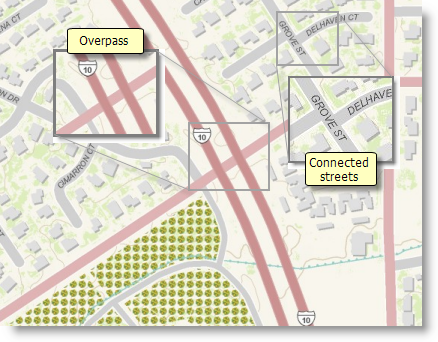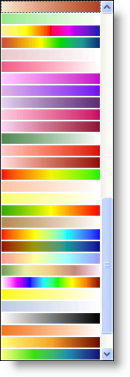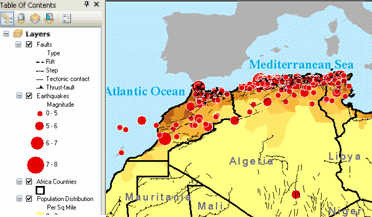Symbols
Symbols are graphic elements that are used in map displays. There are a number of symbol types, such as:
- Markers which are primarily used to display point locations
- Line symbols used to display linear features and boundaries
- Fill symbols used to fill in polygons
- Text symbols used to set the font, size, color, and other text properties.
Styles
A style is a collection of symbols, colors, and map elements that match a theme or application domain—for example, a style set for transportation maps or geology maps.
Renderer
The type of display method used to draw a map layer. For example, there are renderers to fill polygons using a number of categories based on unique attribute values, renderers to display shaded relief of digital elevation models, and multivalue renderers to draw charts showing statistical information about each feature. There are numerous types of renderers that are used to display layers. Renderers tend to vary by the type of map layer. For example, see Renderers used to display raster data for a discussion of rendering raster datasets.
Definition query
Queries that define a subset of features in a dataset that will be displayed by a map layer. Many datasets are very large and can cover huge areas. Other datasets contain a number of subclasses of features. In these cases, it is useful to define a query expression that selects a subset of features for the layer. A definition query is used to specify this subset of features. It is accessed through the Definition Query tab on the Layer Properties dialog box.
Symbol level drawing
Symbol level drawing lets you control the drawing order of feature symbology. This powerful tool allows you to create special cartographic effects by specifying the drawing order of symbol layers for multilayer symbols. For example, you can create cased-line streets, and where these streets intersect, you can either blend their symbology, representing connectivity, or not, to represent an overpass or underpass. 
Graduated colors
A rendering option for displaying quantities using a series of graduated colors—typically to portray quantities of a variable, such as elevation above sea level—or a graduated color polygon fill. 
Color ramp
A mechanism that applies a range of related colors to portray a group of ordered numeric classes for an attribute. 
Graduated symbols
A rendering option for displaying quantities using a series of graduated symbol sizes. Typically, the symbols increase in size as the attribute increases in value. Graduated symbols are often used for point and line features to illustrate quantity. 
Scale-dependent display
Scale-dependent display defines the range of map scales at which the layer is visible in the map display. This is useful for ensuring that datasets that are suitable for display in one scale range are not visible in your map document unless you are within the appropriate scale range. It also enables you to define layer display rules that are appropriate for each range of map scales, which is very useful when building multiscale maps. You can set scale-dependent drawing properties on the General tab of the Layer Properties dialog box.
Layer transparency
A layer that you can see through (or underneath). Transparency can be set at varying levels of opacity as a percentage value. The higher the value, the higher the transparency is. 